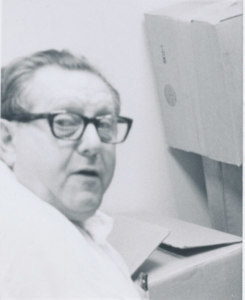I first met Max Margolies in the mid 1960’s. At the time, I used to help out showing Auction lots at my father’s office on Saturdays. Stamp professionals didn’t specialize to the degree that they do today. There were a few US only dealers or British Commonwealth dealers but the majority of stamp sellers tried to buy and sell the world. There were two reasons for this. First, stamp prices were lower relative to the general economy and so stamp professionals such as Max Margolies needed a larger pool of stamps to buy and sell in order to make a living. And secondly, there were many more Public stamp auctions in 1960 than there are today. Thus dealers and collectors could have an opportunity to see and learn a far more comprehensive portion of philately than that which is possible today. “There are half as many stamps sold today as were sold 20 years ago “Max would say “and 20 years from now there will be half again. More collectors mean greater diffusion of philatelic material, and more diffusion means fewer stocks and specialized collections that are offered for sale. This is the last generation that will produce collectors and dealers that have a truly worldwide knowledge of stamps. After that there will just be no way to learn about them”. Max pointed out that in 1960 in a given month there were ten or fifteen large stamp auctions in the United States, with hundreds of large collection lots and specialized collections. “This is the corpus of our hobby from which new generations of philatelists can learn.”
Max Margolies
Max’s first love was United States stamps. He showed me how to distinguish Bank Note printings (Scott#134-191) by their color and paper types rather than by the “secret marks” listed in the catalog (“too hard to see them” he said). He taught me the trick of peeling a stamp from the hinge rather than the hinge from the stamp which prevents the occasional thin. He had a modernist’s interest in stampless covers, then emerging from the oblivion to which the first generation of collectors had assigned them. He was an early connoisseur of postal history or “stamps on envelopes” as he called it “Postal history doesn’t mean covers” he said decrying the fashionable moniker. “Postal history could just as easily mean collecting mail boxes “. He had a love for British Commonwealth and Latin America. In my experience most collectors and dealers have little interest in stamps that have been issued during their adulthood. Most of us concentrate on the stamps of our childhood and before. This has always been the case with collectors. Accordingly Max had little use for First Day Covers and plate blocks, both of which became popular as collecting specialties in the 1920’s.
Max was born in 1905 and had a college degree in accounting. He became a stamp dealer as a result of the event that caused the greatest number of people ever to switch from collecting to dealing- The Great Depression. Max was out of a job in 1930 and he and his brother Arthur became stamp dealers on Nassau Street in New York. After a while he and his brother split up the business with Max concentrating on the buying and selling side and Arthur concentrating on philatelically collateralized loans. For many years Max was one of the largest buyers of stamps at public Auction, regularly spending million of dollars per year. Max was a close family friend and passed away in March of 1981, five days after attending my wedding.

